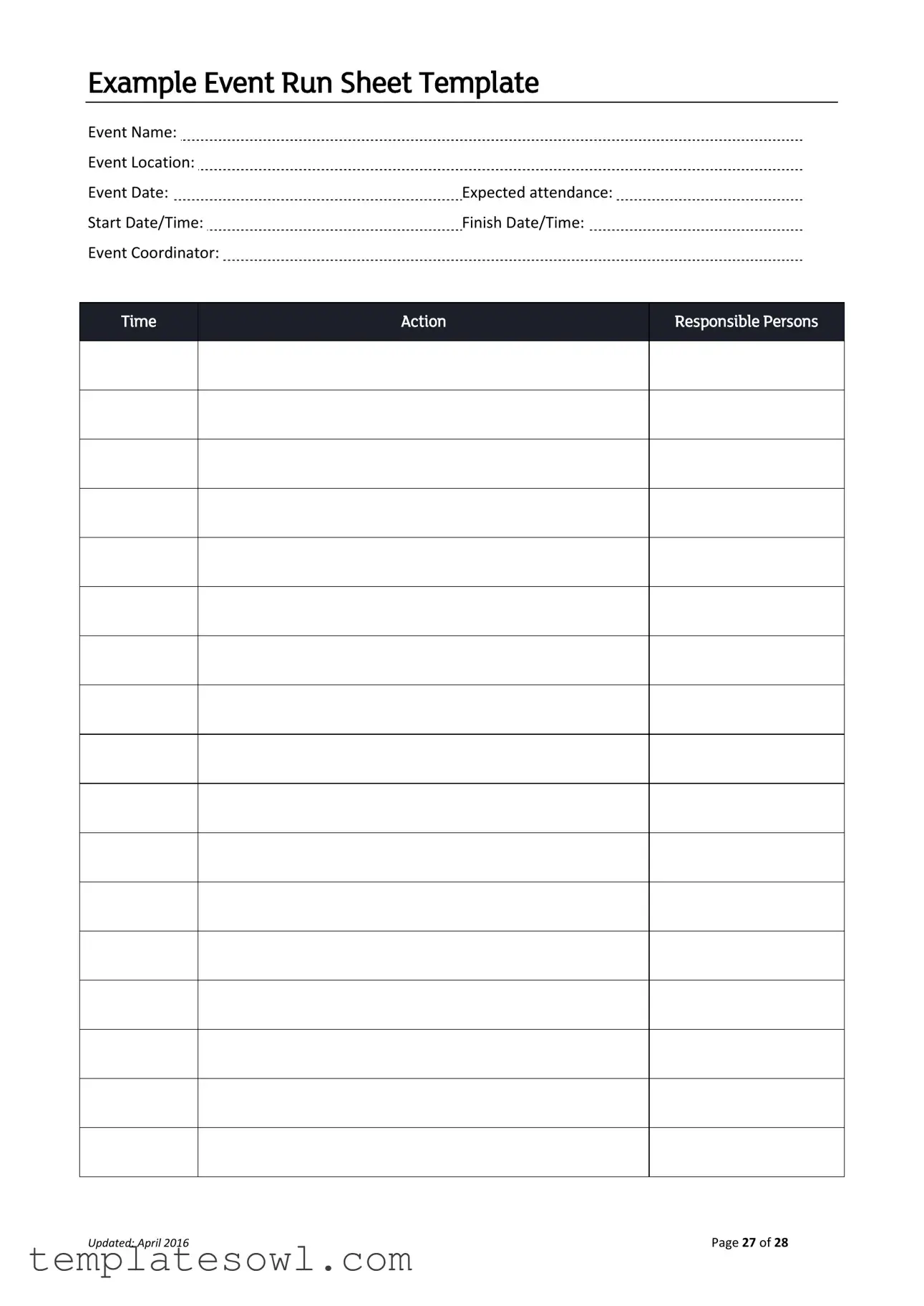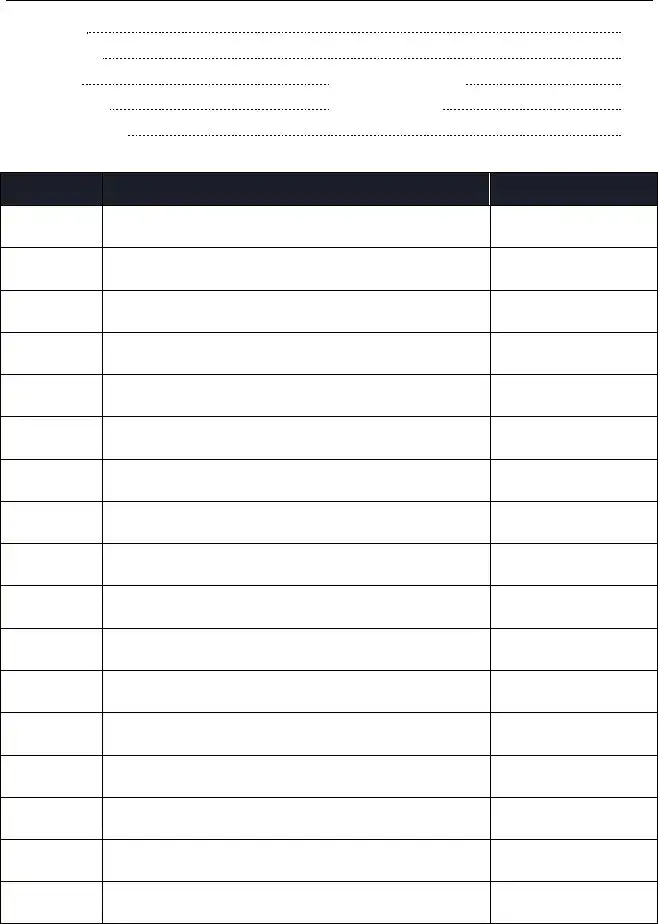What is a Running Sheet form, and why is it important?
A Running Sheet form is a detailed schedule used to outline the timeline and critical actions for an event. It serves as a guide for all involved parties to ensure that everything goes according to plan. This document lists every activity that will occur during the event, from start to finish, along with the person responsible for each task. By using a Running Sheet, event coordinators can streamline communication, track responsibilities, and monitor the flow of the event more effectively.
What key elements should be included in a Running Sheet form?
A comprehensive Running Sheet should include several essential components. These include the event name, location, date, and expected attendance. Additionally, it should identify the start and finish date/times of the event. The event coordinator’s name and contact information are also critical, as they serve as the point of reference for any questions or issues that arise. The timeline of actions, detailing specific tasks along with the responsible person's name, should be clearly laid out to ensure nothing is overlooked.
How often should the Running Sheet form be updated?
It is advisable to update the Running Sheet form regularly, especially as the event date approaches. Changes can occur due to client requests, venue restrictions, or unforeseen circumstances. If any updates are made, ensure to communicate these changes to all relevant parties promptly. Regular updates help maintain clarity and coordination, reducing the risk of miscommunication or tasks being neglected.
Who should have access to the Running Sheet form?
Access to the Running Sheet should be granted to all individuals directly involved in executing the event. This includes, but is not limited to, event coordinators, personnel responsible for different activities, volunteers, and vendors. Providing everyone with access creates a sense of ownership and accountability. It also enhances teamwork, as everyone is aware of their responsibilities and the overall event timeline.

